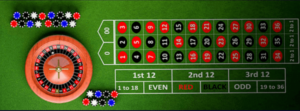A Guide on How to Win with the d’Alembert System
The d’Alembert betting system is well-known and popular. Like most betting strategies, it frequently yields a little profit at the expense of occasionally substantial losses.
Similar to the Martingale strategy, bets increase in size after losing bets and reduce after winning ones. There is more time spent at the table and less volatility because it is not as aggressive as those other progressive betting methods. Additionally, it results in a lower likelihood of achieving the ultimate aim.



